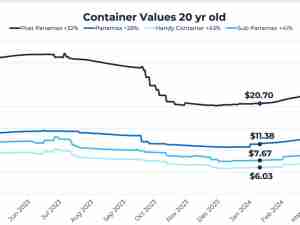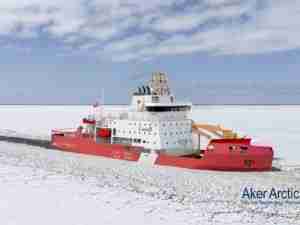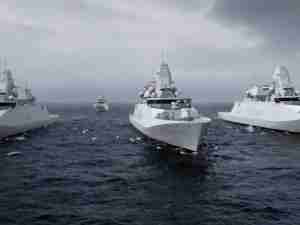Speaking before Great Lakes Maritime Task Force's 12th Annual Informational Briefing for the Great Lakes Delegation in Washington, Carrabba emphasized that Cliffs' iron ore mines can annually produce approximately 37 million long tons of iron ore pellets when the North American steel industry is operating at high levels. "Virtually all of those pellets are delivered to our steel mill customers in US- and Canadian-Flag Great Lakes vessels," he said.
Lack of adequate dredging and low water levels have reduced the amount of iron ore Great Lakes freighters can deliver each trip. "On April 6, a 1,000-foot-long US-Flag vessel with a rated capacity of 71,120 tons departed Superior, Wisconsin, with less than 59,000 tons of Cliffs' pellets onboard. Nearly 17% of the vessel's carrying capacity, or 12,000 tons, was negated by the dredging crisis and low water levels."
Carrabba noted another vessel departed Superior with its holds only 87% full. "The 8,000 tons of Cliffs' pellets that had to be delivered on the next trip represent eight hours production at our largest Minnesota mine."
Carrabba also warned that the dredging crisis is worsening. "Budget shortfalls have cancelled dredging in several ports this year, including Huron, Ohio. That port can receive more than 700,000 tons of iron ore in a given year, but the channel is so clogged that the first cargo of 2007 represented only 77% of the vessel's rated capacity."
"Cleveland-Cliffs has a lot a stake in this," he declared. "Iron ore pellets account for 100 percent of our business, and 96 percent of the pellets we produced last year moved in Great Lakes vessels. Those percentages are unlikely to change. Great Lakes shipping will always be the most cost-effective way to deliver our iron ore to our customers."
Carrabba further noted that as a cargo shipper, Cleveland-Cliffs pays into the Harbor Maintenance Trust Fund that provides for Operation and Maintenance Dredging of deep-draft ports and waterways. "This fund currently has a surplus of $3.3 billion. At last estimate, the cost of restoring the Great Lakes navigation system to project dimensions was projected to be $200 million. This is not a case of a lack of funds. It's a lack of understanding the vital role 13reat Lakes shipping plays in our nation's economy and a flawed system for allocating those monies that are released from the Harbor Maintenance Trust Fund."
Carrabba urged the Administration to commit itself to restoring the Great Lakes navigation system to project dimensions. "The restructured domestic integrated steel industry is the most efficient in the world. Productivity at our operations is world-class, and the US-Flag Lakers represent the largest fleet of self-unloading vessels in the world. Yet all these advances and advantages are at risk because the US Army Corps of Engineers does not receive enough money to maintain the Great Lakes navigation system."
Headquartered in Cleveland, Ohio, Cleveland-Cliffs is the largest producer of iron ore in North America, operating six mines, three in Minnesota, two in Michigan, and one in eastern Canada. The company also owns 80% of Portman Limited, an iron ore company in Australia that serves the Asian iron ore markets. Cliffs also has a 30% interest in a Brazilian iron ore project, and a 45% interest in an Australian coal project.
Great Lakes Maritime Task Force was founded in Toledo, Ohio, in 1992 to promote domestic and international Great Lakes shipping. It is the largest coalition to e








